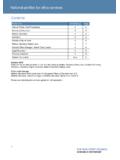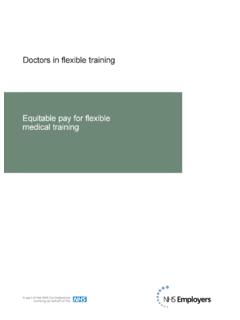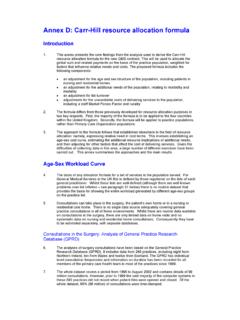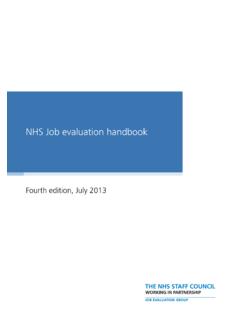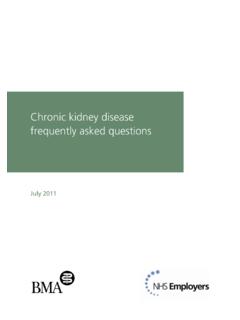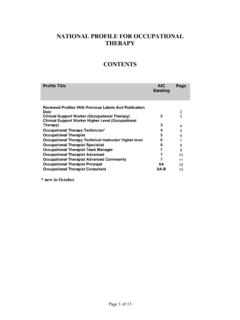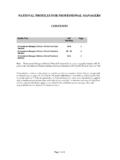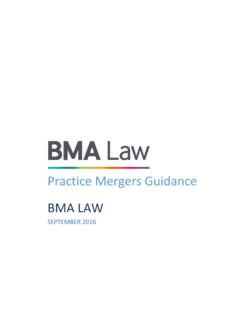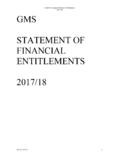Transcription of 2016/17 General Medical Services (GMS) contract …
1 2016 /17 General Medical Services (GMS) contract quality and Outcomes Framework (QOF) Guidance for GMS contract 2016 /17 April 2016 Contents Publications Gateway Reference Number 05093 3 Contents Section 1 Introduction 6 Changes for 2016 /17 7 National Institute for Health and Care Excellence (NICE) 7 Disease registers 8 Achievement 9 Verification 11 Disputes 12 Business Rules 12 Exception reporting 13 Section 2 Summary of all indicators 14 Section 3 Clinical domain 30 Atrial fibrillation (AF) 32 Secondary prevention of coronary heart disease (CHD) 36 Heart failure (HF) 39 Hypertension (HYP) 43 Peripheral arterial disease (PAD) 46 Stroke and transient ischaemic attack (STIA) 50 4 Diabetes mellitus (DM) 54 Asthma (AST) 66 Chronic obstructive pulmonary disease (COPD) 73 Dementia (DEM) 79 Depression (DEP) 84 Mental health (MH) 86 Cancer (CAN) 95 Chronic kidney disease (CKD) 97 Epilepsy (EP) 100 Learning disabilities (LD) 101 Osteoporosis.
2 Secondary prevention of fragility fracture (OST) 104 Rheumatoid arthritis (RA) 110 Palliative care (PC) 113 Section 4 Public health domain 116 Cardiovascular disease primary prevention (CVD-PP) 117 Blood pressure (BP) 121 Obesity (OB) 122 5 Smoking (SMOK) 124 Public health additional Services 131 Cervical screening (CS) 131 Contraception (CON) 134 Section 5 Exception reporting 136 Exception reporting FAQs 142 Section 6 Glossary of acronyms 144 Section 7 Queries 149 Section 8 QOF quick guide 150 6 Section 1: Introduction The quality and Outcomes Framework (QOF) rewards contractors for the provision of quality care and helps to standardise improvements in the delivery of primary Medical Services .
3 Contractor participation in QOF is voluntary. Changes to QOF are agreed as part of wider changes to the General Medical Services (GMS) contract . Changes to the GMS contract are negotiated annually by NHS Employers (on behalf of NHS England) and the British Medical Association s (BMA) General Practitioners Committee (GPC). The following principles have been agreed by the negotiating parties: Indicators should, where possible, be based on the best available evidence. The number of indicators in each clinical condition should be kept to the minimum number compatible with an accurate assessment of patient care.
4 Data should never be created purely for audit purposes. Only data which is useful in patient care should be collected. The basis of the consultation should not be distorted by an over emphasis on data collection. An appropriate balance has to be struck between excess data collection and inadequate sampling. Data should never be collected twice eg data required for audit purposes should be data routinely collected for patient care and obtained from existing practice clinical systems. In addition to the above principles: Indicators should consist only of anonymised data except for the purposes of post-payment verification (see Verification ) Commissioners and practices undertaking QOF work should be mindful of the information governance standards for each practice and seek appropriate assurance in line with the governing contract .
5 The QOF is different across England and the Devolved Administrations. This guidance applies in England only. The term NHS CB (NHS Commissioning Board) is the organisation legally responsible for the commissioning of primary care in England. From 1 April 2013 the NHS CB has operated under the name NHS England. NHS England is referenced throughout this guidance, excepting where it is necessary to use NHS CB to reflect the Statement of Financial Entitlements (SFE)1 Directions. From 1 April 2015, co-commissioning arrangements are available in England. As such references to commissioners in the document could be NHS England or a clinical commissioning group (CCG).
6 Section two summarises all indicators for 2016 /17 QOF, which is extracted from Annex D of the SFE. This guidance is effective from 1 April 2016 and replaces 1 DH. SFE. 7 versions issued in previous years. Annex D to the SFE forms part of the GMS contract . Changes for 2016 /17 NHS Employers and the GPC have agreed that there will be no changes to existing indicators and no new or retired indicators for 2016 /17. A summary of the QOF indicators for this year are available in section eight. GPs will use their professional judgement and continue to treat patients in accordance with best clinical practice guidelines and will continue to undertake work and code activity as clinically appropriate in relation to those indicators no longer in QOF.
7 Practices are encouraged to facilitate data collection on these indicators. Periodically, NHS England will collect anonymised data from practices clinical systems which will provide statistical information, be processed for audit and publication and will help inform commissioners and practices. It is not intended for performance management purposes. For 2016 /17 there are 559 points in QOF across two domains for clinical and public health indicators. The value of a QOF point for 2016 /17 has been adjusted to recognise any changes in population and practice list size from 1 January 2015 to 1 January 2016 .
8 This figure is subject to change in future years. In addition, the planned changes to thresholds have been deferred for a further year to 1 April 2017. The national average practice population figure for the 2016 /17 QOF year is taken from the Calculating quality Reporting Service (CQRS) on 1 January 2016 and is 7,460. The value of a QOF point for 2016 /17 is Indicators are prefixed by an abbreviation of the category to which they belong, for example coronary heart disease (CHD) indicator number one, becomes CHD001. Changes to indicator IDs from April 2015 relate to those indicators where there has been a change to wording or timeframes, or significant changes to coding or the data collection logic.
9 This is to ensure that indicators are not compared to previous years indicators. National Institute for Health and Care Excellence The National Institute for Health and Care Excellence (NICE) is responsible for managing an independent and transparent approach to developing and maintaining the QOF clinical and public health improvement indicators. The focus for new indicators is informed by priorities for new indicators identified by NHS England and representatives from the devolved administrations. Supporting guidance for new indicators is provided by NICE quality Standards (QS), NICE guidance and NICE accredited guidance.
10 Interested individuals/organisations are encouraged to register with NICE as a stakeholder in the development of individual quality standards. Once registered, stakeholders are able to comment on the content of quality standards during their development. The comments facility and full details of quality standards in development are available on the NICE website2. 2 NICE. quality standards. 8 Indicators that have been developed through the NICE process3 are identified by the reference 'NICE [YEAR] menu ID: NMXX' for information. The term 'based on NICE menu ID XX' is used to refer to NICE indicators amended by negotiations.
